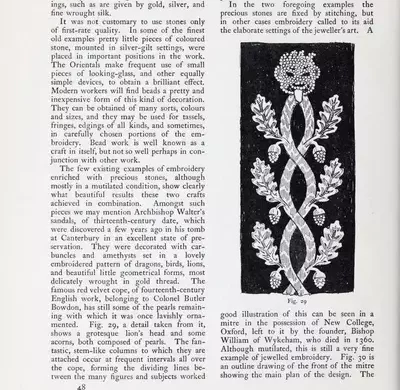
Post from Gracie Christie’s book Embroidery: A Collection of Articles on Subjects Connected with Fine Embroidery which had the design for the lion’s head worked in pearl and beadwork. While updating links in that article, some other resources surfaced, which might provide enjoyable reading and viewing as the New Year gets underway. The first stop is a short journey back in time to a previous Exhibit at the Metropolitan Museum of Art: Ecclesiastical Vestments of the Middle Ages: An Exhibition.
Like this:
Like Loading...
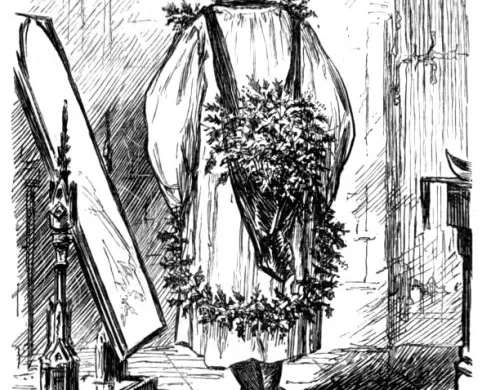
Before the Holidays, things usually were put away and kept neat and tidy in the sewing room. But somehow things changed over the past two weeks. In the bustle of the moment, things need to go somewhere to a room not in regular use in a rather small house – the sewing room.
Like this:
Like Loading...
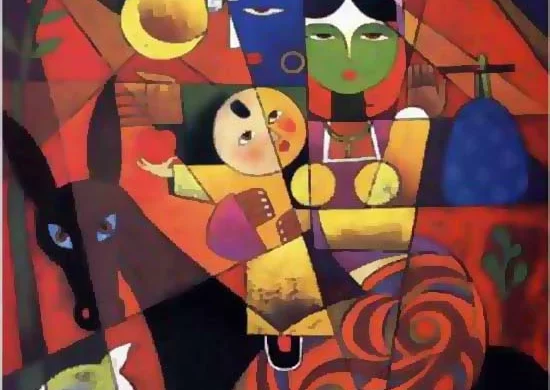
This festival of The Holy Innocents is often passed by in the Lutheran Church.
– a rare and special time to celebrate in festival Sunday.
Like this:
Like Loading...
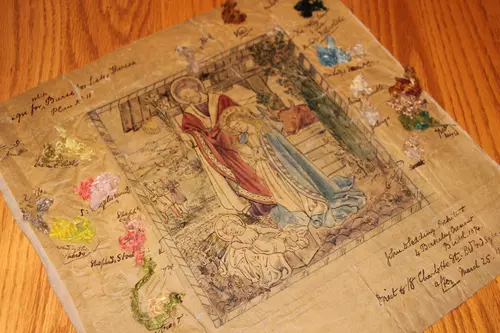
Nativity Ecclesiastical Embroidery Design created in 1874 by the architect of the Gothic Revival period John D. Sedding.
Like this:
Like Loading...
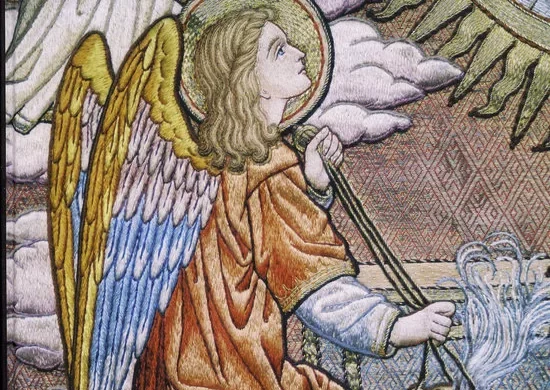
Book written by Marike van Roon, Head Curator at Amsterdam University as her dissertation was added to my library last summer and has become a favorite. Beginning at around the 1800s, the book lays out the history of European Ecclesiastical History through the 1960s. There is a nice mix of primary source material in the form of sketches and illustrations from texts and authors of the period, while stunning black and white, and color photography of actual vestments pieces
Like this:
Like Loading...
Elizabeth Hoare, the owner of Watts and Co., played a unique role in preserving Ecclesiastical Vestment history. During her ownership, she safeguarded hand-embroidered works from the late 19th to mid-20th century, ensuring their survival when they were undervalued. Her efforts created a lasting legacy, and today, her collection is displayed at Liverpool Cathedral’s Cathedral Gallery.
Like this:
Like Loading...
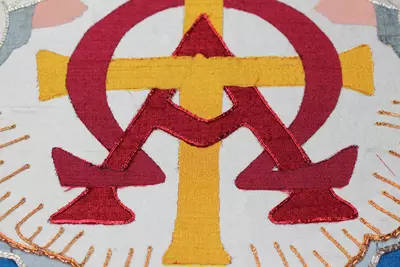
The Red Cord was used to couch the Red Passing thread. It worked great from the start, for about 3 stitches. Then, as the metallic cord was pulled through the fabric, the cord separated, showing the white core.
Like this:
Like Loading...
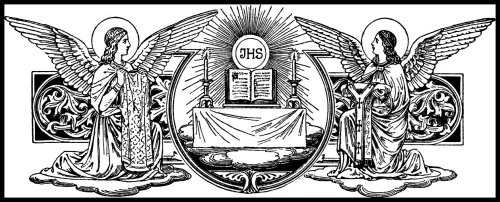
Making of a square yoke surplice pattern, graded to multiple sizes.
Like this:
Like Loading...
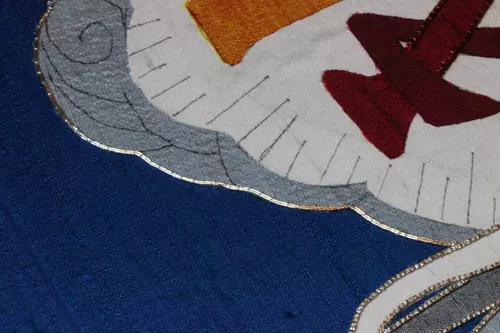
Using a combination of silver threads and pearls, the design sparked the imagination. The silver threads give the embroidery such a light and delicate look. Couching metallic threads is fairly simple, but some tips and techniques help add that final touch to the stitching.
Like this:
Like Loading...
The Flickr photo stream might give a clue on how Ecclesiastical vestments are prepared for large events when hundreds of chasuble, mitres, dalmatics, and tunics are needed. The Stadelmaier photo stream shows the background of a vestment manufacturer making Ecclesiastical Vestments: from the Vestment Design process to final construction, the photos tell an unknown tale. The photo stream also gives a clue as to how church vestments were made in the past by including a collection of old black-and-white photos.
Like this:
Like Loading...
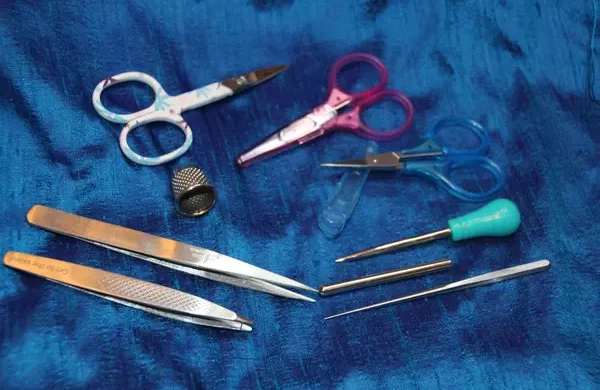
The list of tools for hand embroidery includes Embroidery Scissors, Tweezer, Tailor’s Thimble, awl, laying tool and Mellor.
Like this:
Like Loading...
This is a digital initiative that aims to use social media in a new way – new boards on Pinterest will be added every week, each dedicated to a single object and presenting images that convey technical information.
Like this:
Like Loading...
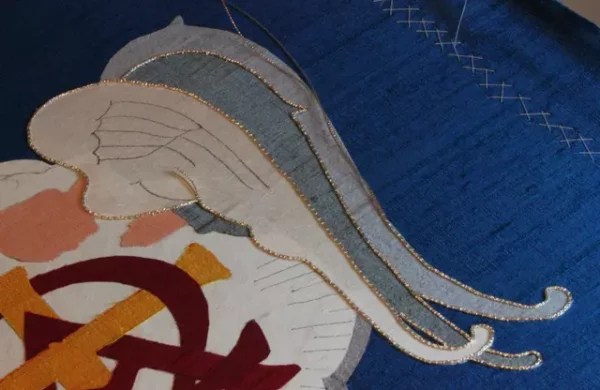
The key to success with a goldwork project is the shimmer of light as it hits and plays off the metallic threads. Adding another color to the mix, in the right proportions is a nice addition that opens up a host of design options. Taking the chance and placing the order for these copper threads has turned on to be a delight.
Like this:
Like Loading...
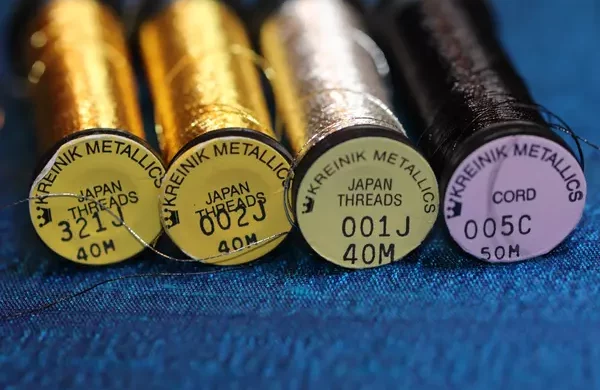
Ecclesiastical Embroidery and Vestment Projects,
– Improving faraway visibility in church embroidery can be tricky. Delicate silver thread on Angel Wings looks nice up close but might fade from a distance. Adding a black outline helps, but it raises concerns about muting the shimmer and blending with the blue background. Deciding between keeping the black for definition or adding more silver threads is a right choice in Ecclesiastical Embroidery.
Like this:
Like Loading...
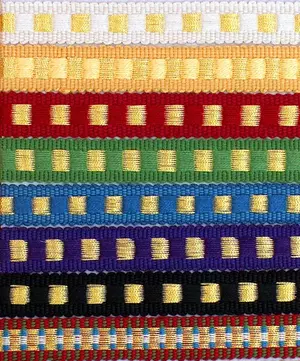
Sharing a vintage church embroidery design from the 1800s, still in the “rough draft” phase and the possibilities for church embroidery design are endless. On option is this versatile design could be used for whitework on altar linens or adapted for silk and gold threads on stole ends or maniples. Placing it in a quatrefoil frame makes it suitable for chasubles or burses. Stretching and elongating for a double oval ring offers options for stoles or chasubles. The design, enhanced with Dice Trim, can also adorn chasubles and dalmatics. The journey of creating ecclesiastical designs is ongoing, offering endless opportunities to learn and explore.
Like this:
Like Loading...

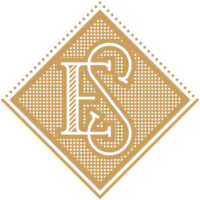











You must be logged in to post a comment.